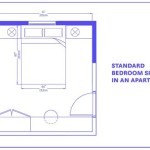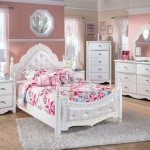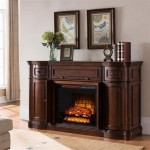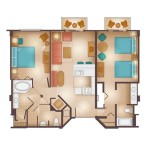Embracing the Allure of Dark Paint Colors for Bedrooms
Dark paint colors offer a sophisticated and dramatic aesthetic for bedrooms, moving beyond the traditional preference for lighter, brighter hues. This trend towards darker shades reflects a desire for creating intimate, enveloping spaces that promote relaxation and restful sleep. Selecting the right dark paint color, undertone, and accompanying design elements is crucial to achieving a balanced and harmonious bedroom environment.
The psychological impact of color is a significant factor in bedroom design. Darker colors tend to absorb light, which can create a sense of enclosure and security. This can be especially beneficial for individuals who are sensitive to light intrusion or prefer a more cocoon-like atmosphere for sleep. Conversely, the misuse of dark colors can lead to a space feeling cramped or oppressive, highlighting the importance of careful planning and execution.
Before committing to a dark paint color, consider the existing architectural features of the bedroom. The size of the room, the amount of natural light it receives, and the presence of architectural details like moldings, wainscoting, or built-in shelving all play a role in how a dark color will appear and function. A smaller room with limited natural light may require a lighter shade of dark paint, or strategic use of reflective surfaces, to prevent it from feeling claustrophobic.
The key to successfully incorporating dark paint colors lies in understanding their undertones. Undertones are the subtle colors that underlie the main hue, and they can significantly impact the overall feel of the room. For example, a dark gray with blue undertones will create a cooler, more calming atmosphere, while a dark brown with red undertones will impart warmth and richness. Test paint samples in the room under different lighting conditions to accurately assess the undertones and ensure they align with the desired aesthetic.
Beyond the undertone, the paint finish also affects the perceived color and reflectivity. Matte finishes absorb the most light, creating a velvety, dramatic look. Eggshell finishes offer a slightly more reflective surface, providing a subtle sheen. Satin finishes are more durable and easier to clean, making them suitable for high-traffic areas or walls that are prone to smudging. Glossy finishes are the most reflective and can be used to highlight architectural details or create a sense of depth.
Understanding the Psychology of Dark Colors in Sleep Spaces
The selection of a bedroom paint color extends beyond mere aesthetics; it directly influences the emotional and physiological experience of the space. Dark colors, in particular, carry significant psychological weight. They are often associated with feelings of security, intimacy, and introspection, qualities that can be highly conducive to restful sleep.
Certain shades of dark blue, for instance, are known for their calming and tranquil effect. Blue is often associated with the sky and the ocean, evoking a sense of peace and serenity. A dark navy blue or a deep teal can create a soothing atmosphere that promotes relaxation and reduces anxiety, making it easier to fall asleep and stay asleep throughout the night.
Dark greens, on the other hand, evoke a sense of nature and grounding. They are often associated with renewal, growth, and stability. A dark forest green or a deep olive green can bring a sense of the outdoors into the bedroom, connecting you to the natural world and promoting a feeling of well-being. These colors can be particularly beneficial for individuals who live in urban environments and crave a connection to nature.
Dark grays, ranging from charcoal to slate, offer a sophisticated and versatile option. Grays are often associated with neutrality and balance. A dark gray bedroom can create a sense of calm and stability, allowing you to disconnect from the stresses of the day and focus on relaxation. When selecting a gray paint, pay close attention to the undertones. Warm grays with yellow or beige undertones will create a cozier atmosphere, while cool grays with blue or green undertones will feel more modern and serene.
While dark colors can offer numerous psychological benefits, it is crucial to consider individual preferences and sensitivities. Some individuals may find dark colors to be oppressive or claustrophobic, especially if they are prone to feelings of anxiety or depression. In such cases, it may be best to opt for lighter shades or to use dark colors sparingly as accent walls or in smaller elements of the room.
Strategic Lighting and Accents: Balancing Dark Walls
Achieving a well-balanced and inviting bedroom with dark paint colors requires careful consideration of lighting and accents. Dark walls absorb light, so it is essential to incorporate sufficient light sources to illuminate the room and prevent it from feeling gloomy. The strategic use of lamps, sconces, and overhead lighting can create a warm and inviting ambiance.
Layered lighting is key to creating a dynamic and functional bedroom. Start with ambient lighting, such as overhead fixtures or recessed lighting, to provide general illumination. Then, add task lighting, such as bedside lamps or reading lights, for specific activities like reading or working. Finally, incorporate accent lighting, such as wall sconces or picture lights, to highlight architectural details or artwork.
The type of light bulb used can also significantly impact the overall feel of the room. Warm white bulbs emit a soft, yellowish light that creates a cozy and inviting atmosphere. Cool white bulbs emit a bright, bluish light that is better suited for task lighting or highlighting details. Experiment with different bulb types to find the one that best complements the dark paint color and achieves the desired ambiance.
In addition to lighting, carefully chosen accents can help to balance the darkness of the walls and create visual interest. Light-colored bedding, rugs, and curtains can provide a contrast to the dark walls, preventing the room from feeling too heavy. Metallic accents, such as gold or silver picture frames, lamps, or decorative objects, can add a touch of glamour and reflect light around the room.
Textural elements can also play a crucial role in softening the impact of dark walls. Incorporating soft textures like velvet, wool, or faux fur can create a sense of warmth and comfort. Plants can add a touch of nature and freshness to the room, while mirrors can reflect light and create the illusion of more space.
Selecting the Right Dark Hue: Undertones and Room Size Considerations
Choosing the perfect dark paint color for a bedroom is a multifaceted decision that necessitates careful consideration of undertones and room size. The undertone of a dark paint color can significantly impact the overall mood and atmosphere of the space, while the size of the room dictates the intensity and depth of color that can be effectively utilized.
When selecting a dark paint color, it is crucial to identify the undertone. Undertones are the subtle hues that underlie the main color, and they can significantly influence how the color appears in different lighting conditions. For example, a dark gray with blue undertones will create a cooler, more serene atmosphere, while a dark gray with yellow undertones will feel warmer and cozier.
Test paint samples in the room under different lighting conditions to accurately assess the undertones. Natural light, artificial light, and time of day can all affect how a color appears. Observe the paint samples in the morning, afternoon, and evening to determine how the undertones shift and how they interact with the existing furnishings and décor.
The size of the room is another crucial factor to consider. In smaller bedrooms, it is best to opt for lighter shades of dark paint to prevent the room from feeling claustrophobic. Consider using dark colors as accent walls to add depth and visual interest without overwhelming the space. Incorporating reflective surfaces, such as mirrors or glossy finishes, can also help to bounce light around the room and create the illusion of more space.
In larger bedrooms, deeper and more saturated shades of dark paint can be used to create a dramatic and enveloping atmosphere. However, it is still important to balance the darkness with lighter accents and sufficient lighting to prevent the room from feeling oppressive. Consider using contrasting colors for trim, moldings, and architectural details to add visual interest and prevent the space from feeling too monotone.
Consider the overall style and aesthetic of the bedroom when selecting a dark paint color. A modern bedroom might benefit from a cool and minimalist dark gray or navy blue, while a traditional bedroom might be better suited to a warm and inviting dark brown or forest green. Choose a color that complements the existing furnishings, décor, and personal style.

Embrace The Dark Side Decorating With Colors In Your Bedroom Diy Family

Dark Bedroom Ideas 13 Ways To Use Colours In Your

Thoughts On Using Dark Paint Colors In Your Home

10 Dark Bedroom Walls Coco Lapine Design Wall

Best Bedroom Paint Colors 2024 Saatva

Scared Of Dark Paint Don T Be The New York Times

Bedroom Paint Colors How They Affect Your Mood

Dark Glamour Paint Colors Beamin Moore

Color Of The Month Graphic Charcoal Colorfully Behr Bedroom Paint Colors Master Gray Accent Wall
:strip_icc()/greyhunt-a1482b7f512443aab0db93607ae30a82.png?strip=all)
Dark Bedroom Ideas For A Moody And Dramatic Space
See Also








